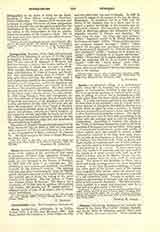

Cuneo, Diocese of (CUNEENSIS), suffragan to Turin. Cuneo is the capital of the province of that name in Piedmont, Northern Italy, agreeably situated on a hill between the Rivers Stura and the Gesso. Originally the city belonged to the Diocese of Mondovi. In 1817 Pius VII made it an episcopal see. The cathedral is very ancient and beautiful, remodeled, however, in the sixteenth century. The painting over the main altar representing St. John the Baptist and St. Michael is the work of the Jesuit Father Pozzi, who painted also at Rome the ceiling of the great Church of St. Ignatius. The first bishop of Cuneo was Amadeo Bruno di Samone. The diocese has a population of 111,200, with 61 parishes, 190 churches and chapels, 220 secular and 20 regular priests, 3 religious houses of men, 27 of women, and 13 educational institutions.
U. BENIGNI

